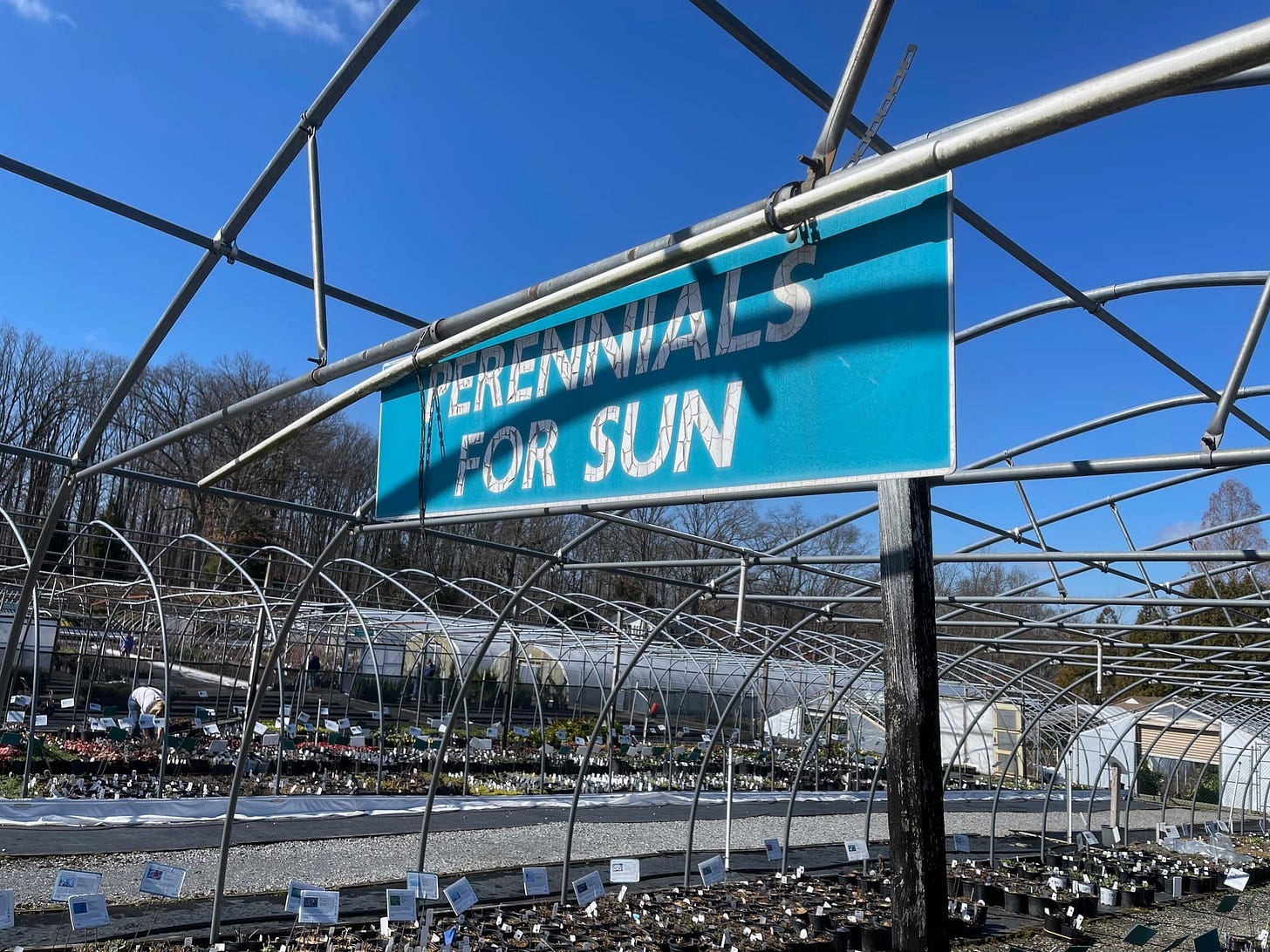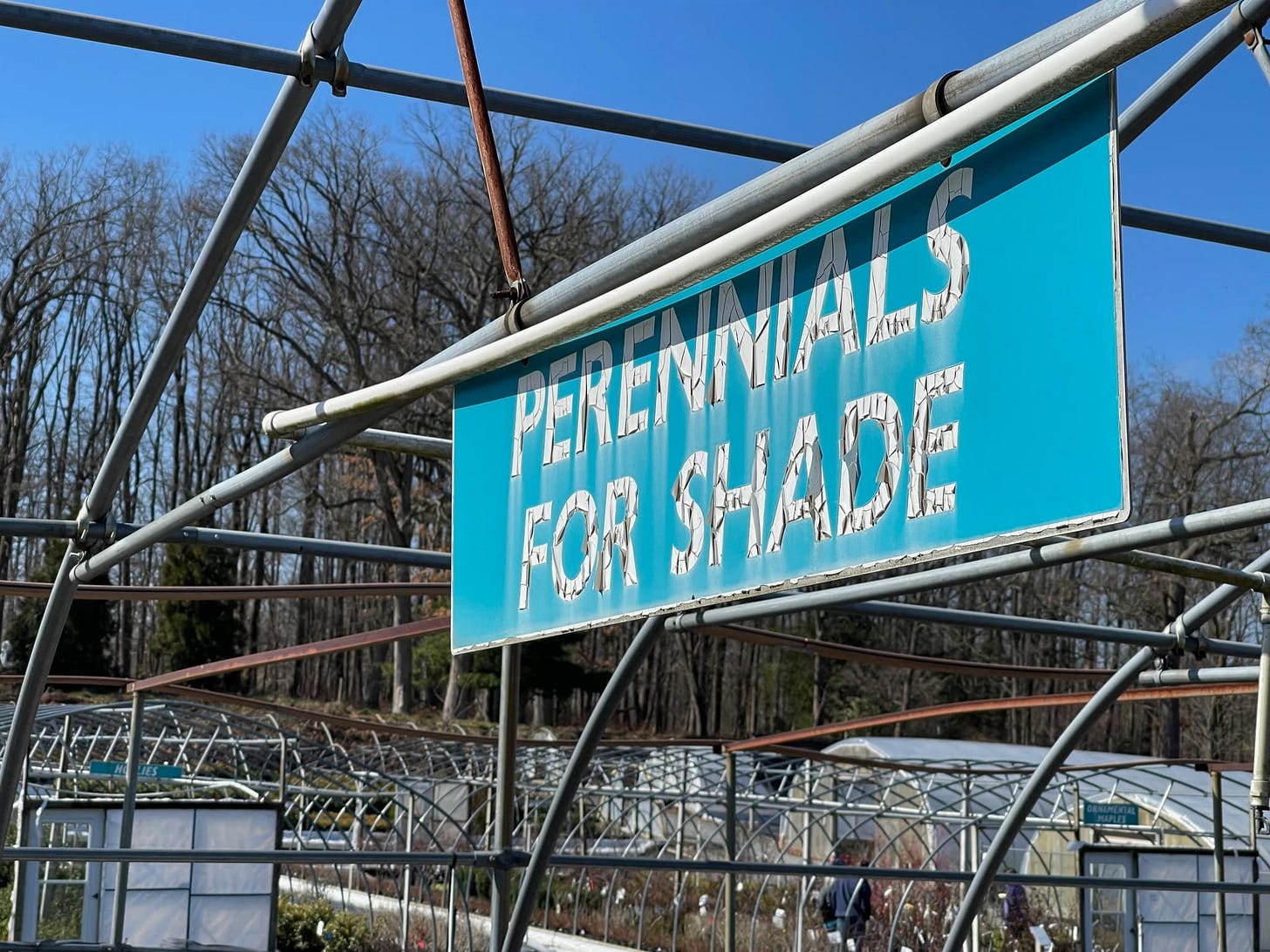Your Local Nursery
Where I explain how the knowledge and endless patience of the staff at your local nursery will probably save you a lot of heartache, make you a better gardener, and might even save your sanity.
It never occurred to me to grow new plants by propagating them from seeds, cuttings, division, or other methods I haven’t heard of yet. Instead, I purchase baby plants and have the benefit of knowing that my specimens are alive. I can see, touch, and feel them, evaluate their health and color, and personally set the odds of whether they will survive in my garden, and if so, for how long. (Note the current Vegas over and under for my new plant estimated time of survival is eight months. Personally, I’m taking the over.) I acknowledge that there is an additional cost to my propagation strategy, but it’s probably the best choice for beginners who can afford it.
If you decide to purchase plants, you can buy them online, at a big box store, or at a local nursery. My opinion, based on my limited experience, is that beginner Type A gardeners should be buying healthy baby plants at their local nursery. It will have a wide selection of plants. The staff patrolling the aisles will help guide you to the plant you think you want, and more importantly, the plant that is probably best for your garden. It is likely that a good nursery takes better care of plants than a big box store, and the quality of their growing medium will improve the odds that you (and your plant) will have a better outcome. The staff will make you believe that they have nothing better to do than chat with you about gardening, and you will find their level of knowledge and enthusiasm to be a great help when confronted by dozens of different plants with nuanced attributes that might be right for your garden. Many of the staff have advanced certificates in gardening and horticulture. At my nursery of choice, I’m told the current preferred certification among senior staff is the Certified Professional Horticulturalist offered by the Maryland Department of Agriculture. If you’re a beginner, everyone who works there knows a lot more about gardening than you do, and they collaborate with each other if you happen to stump the panel with a specific question.
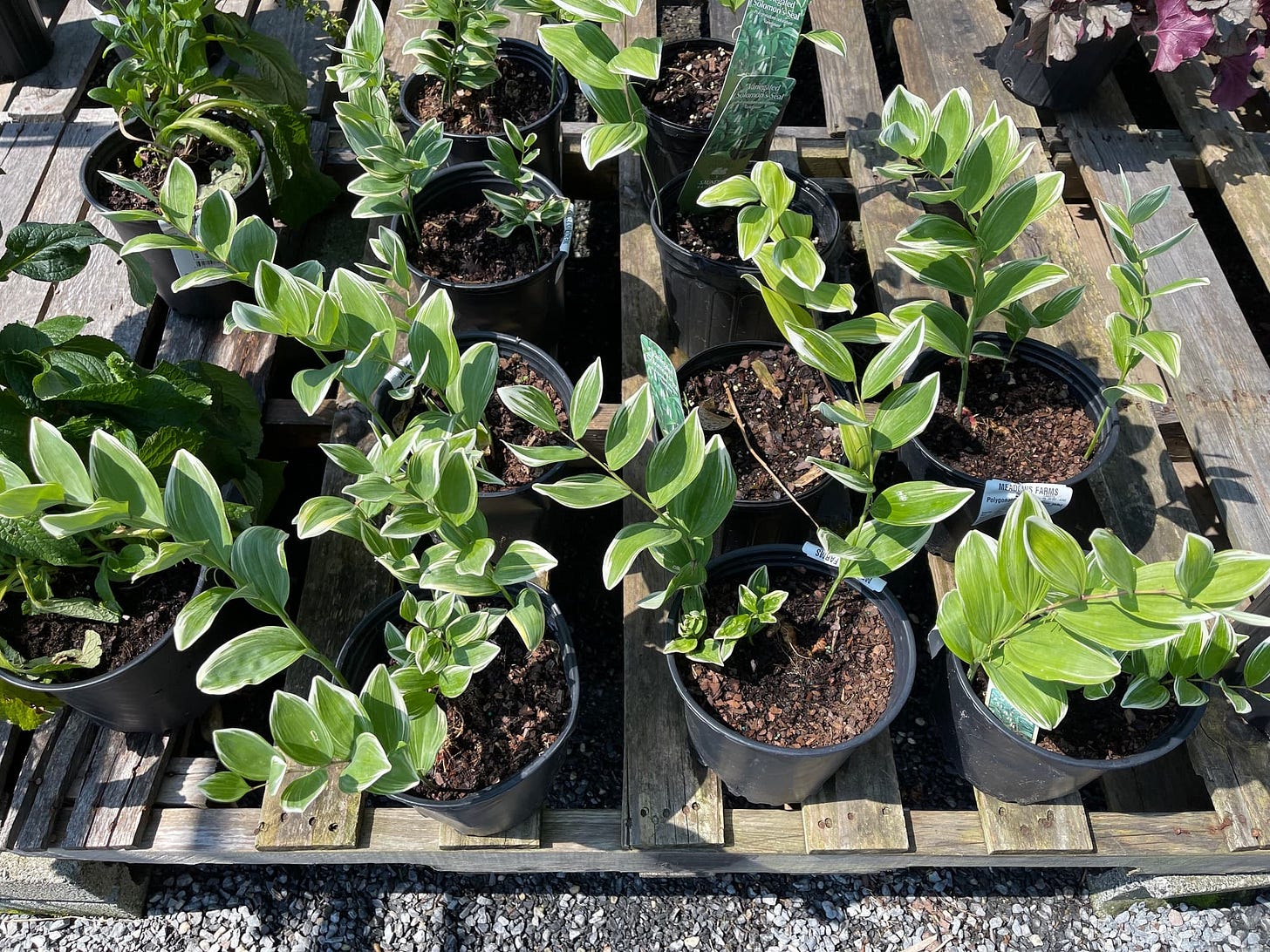
More? Yes, there’s more. The staff at your local nursery is very familiar with your growing zone and can suggest plants that do best in your climate. The nursery often has cultivars (that’s a fancy name for specific plants produced by selective breeding) that could be a solution to your specific gardening challenges. If you are a beginner Type A gardener, it will be a great use of your time to get to know some of the staff at your local nursery. They can help you avoid many of the mistakes you can expect to make as you explore the art of perennial gardening. They’ll even help you cope with the psychic pain of dealing with a dead plant. In my case, I told them that I have a unique and tragic ability to kill plants just by being me, and to their credit, they refused to believe me.

Sasha, my landscape designer, works at Sun Nurseries, in Western Howard County, Maryland. After coming to my home to personally assess the garden, Sasha did a preliminary design for the various beds that included more than one hundred plants. Her design included plants that bloomed at different times of the year with different colors and textures. The perennials were appropriate for the amount of sun in each part of the garden and were deer resistant. After very few changes I agreed to the entire plan and one day in May of 2022, the Sun Nurseries crew arrived and installed all the plants. In one day! The fact that they planted the entire back garden in one day still seems to me to be some kind of miracle. I’ve been trying, and failing, to keep those plants alive and flourishing ever since.
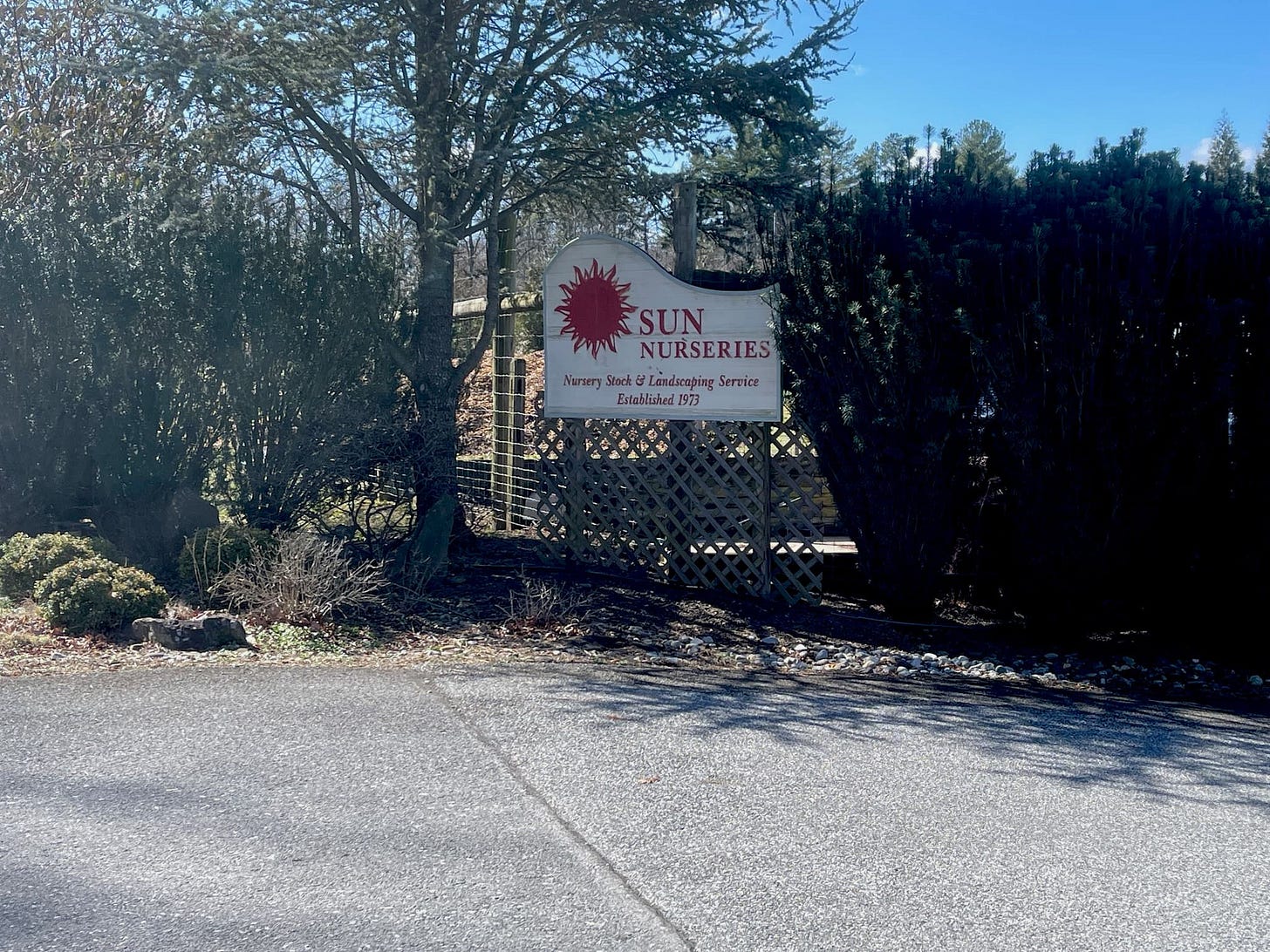
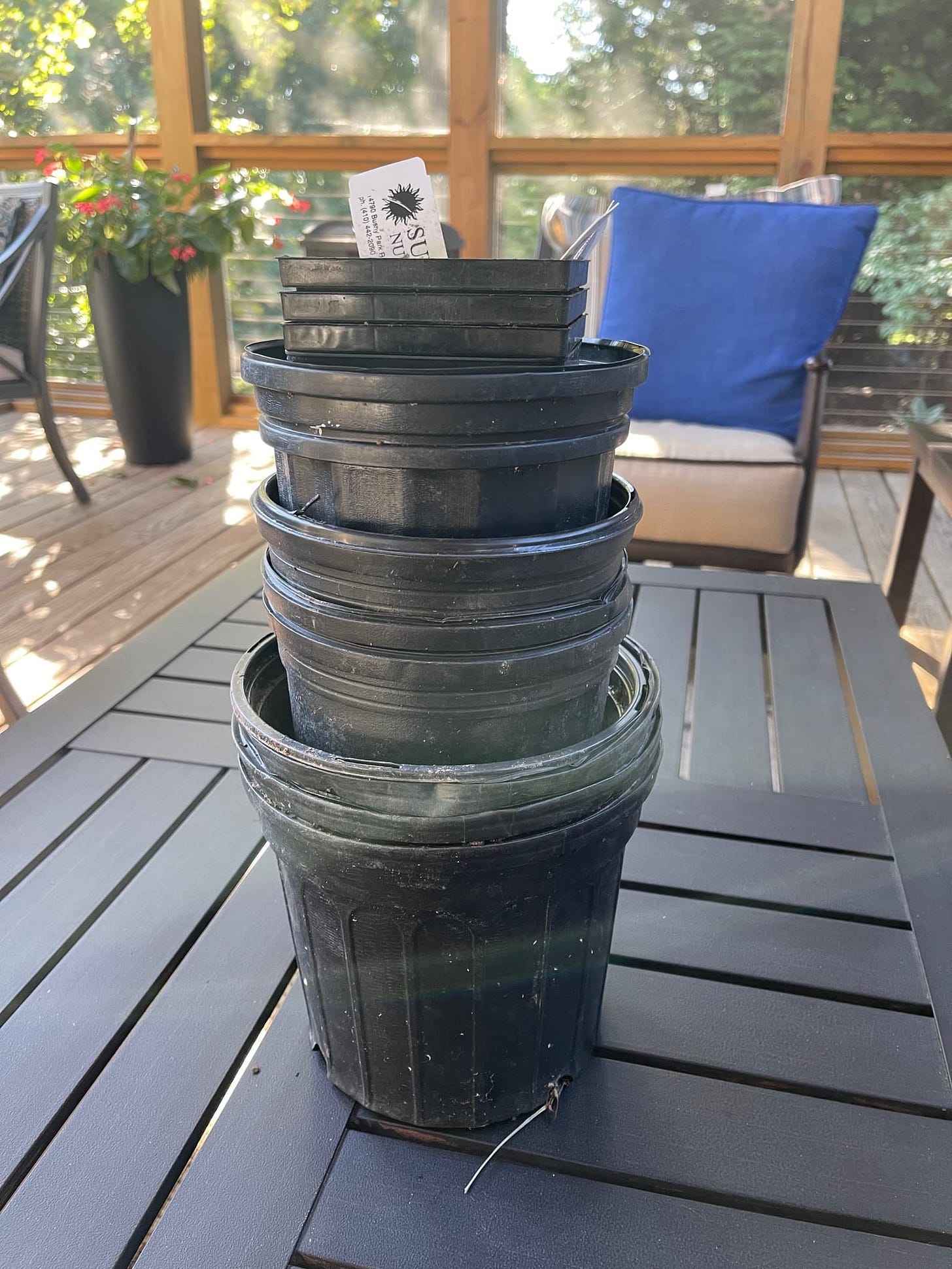
I don’t believe you can discuss different nurseries without considering plant warranties, so here is my take on the subject. The Sun Nurseries warranty is a good example. If you have Sun install your plants, you pay about double the cost of the plants for labor. For that extra expense you get the confidence that their expert crews have installed hundreds of gardens, so in theory, your plants are more likely to live. If Sun does the installation, their warranty says they will replace dead plants for one year after they are installed. They have an interesting definition of a dead plant, where they say that “any plant that is 25 percent dead or more is considered dead and will be replaced.” (The plants I’ve replaced are by all accounts 100 percent dead.) If they install it, you can replace the plant for up to a year, in the same location, or (unofficially) you can get a store credit to buy different plants of the same value. Sasha and Sun managers have a lot of flexibility in helping you exchange plants under the warranty. Their basic philosophy: They do everything they possibly can to keep the customer happy.
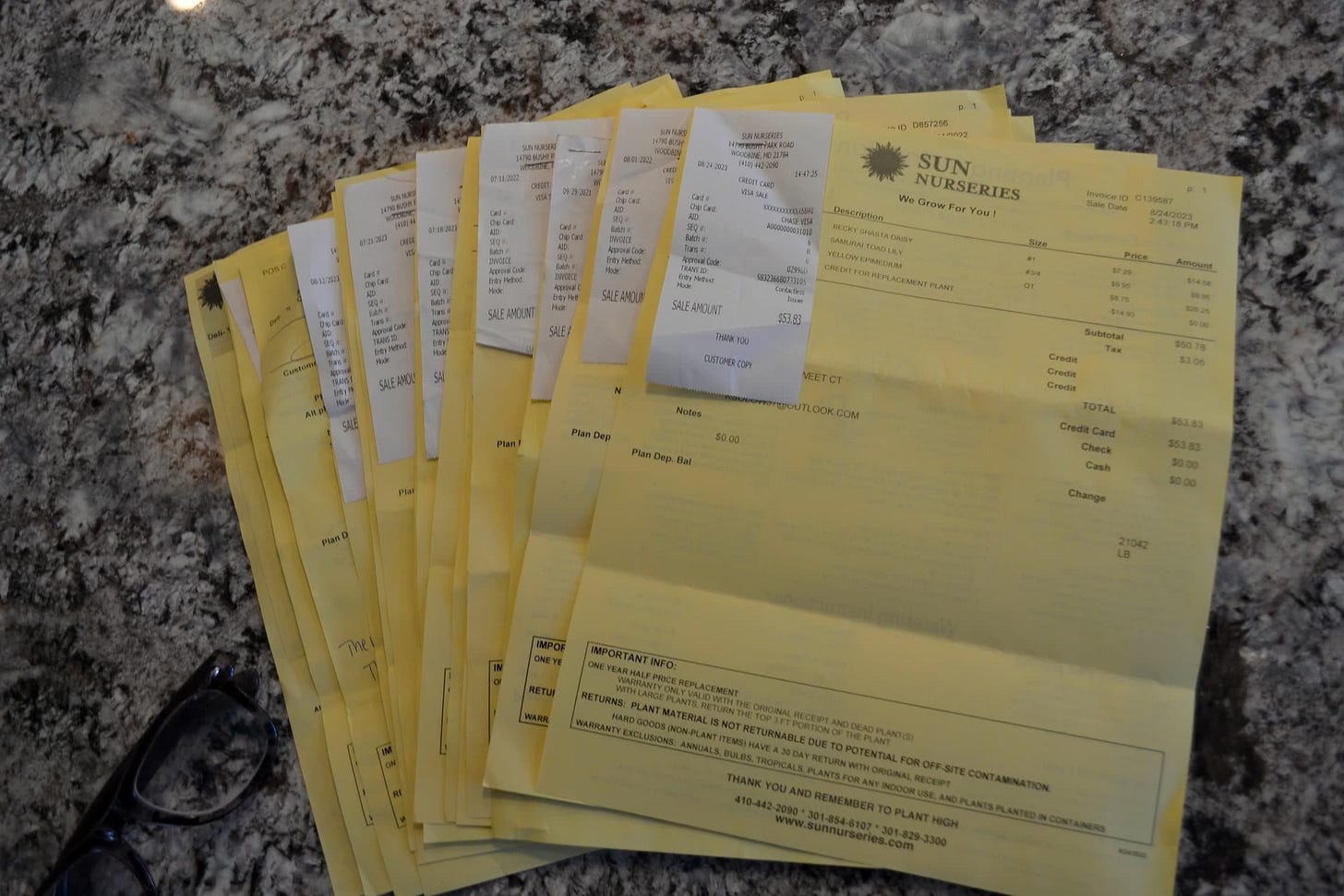
The Sun Nurseries warranty is different when you install the plants yourself. Instead of a one-year, 100-percent replacement warranty, you get a one-year, 50-percent replacement warranty. You must have proof of purchase, and they ask you to bring a plant sample to the store in a sealed plastic bag. In my experience, they have often accepted photos as proof that I had killed a plant, but in my case, I was returning dead plants so frequently that they never had a problem believing I had murdered another one.
If you compare the warranty of two nurseries, one tip is to check the time limit on the warranty offer. A highly regarded nursery close to my home offers a 100-percent replacement credit for plants returned by November 1 of the year of purchase. The 100-percent replacement is fantastic if you are doing the installation yourself and if you are planting in the spring. But if you are doing fall planting in September or October, the November 1 time limit is something to consider. A big box store, like Home Depot, offers a terrific plant warranty. Theirs is a one-year, 100-percent replacement policy, with a money-back guarantee within 90 days. Return the dead plant with your receipt and you’re good to go. Just don’t expect the associate handling the return to be an expert on horticulture. For me, the 50-percent replacement warranty offered by Sun Nurseries isn’t ideal, but I like the plants and the people. They don’t seem to mind chatting with me about gardening topics, and they’ve always been fair to me in handling replacements. Goodness knows I’ve had enough of them. In every case I thought they lived up to the spirit of their warranty, so I give them my business if I can.
Find a nursery close to you and make some friends. For Type A gardeners, it’s a great way to save some time and learn something while you’re at it.
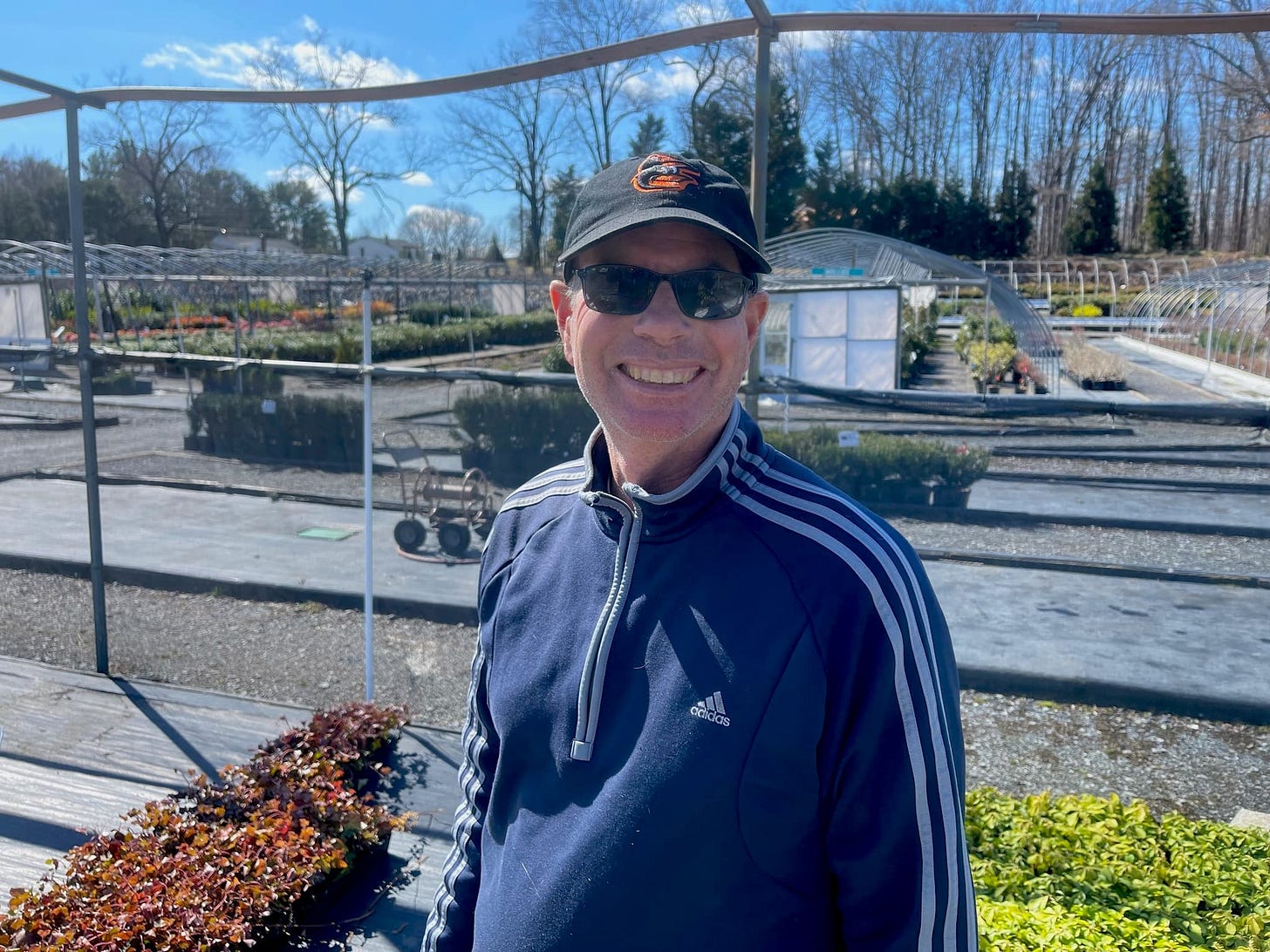
Believe it or not, there is still one more bed to visit on our garden tour, but unfortunately there isn’t much to see. I call it the Empty Bed, and even though it’s empty, there are some good stories to share about it. That’s coming up on the next post here at The Painful Education of a Type A Gardener.
Note to readers: If you are looking for an easy way to find the archives for the blog, try clicking on the small images of me at the top of the blog post. The small round or square images should take you directly to the archive. Happy reading.




